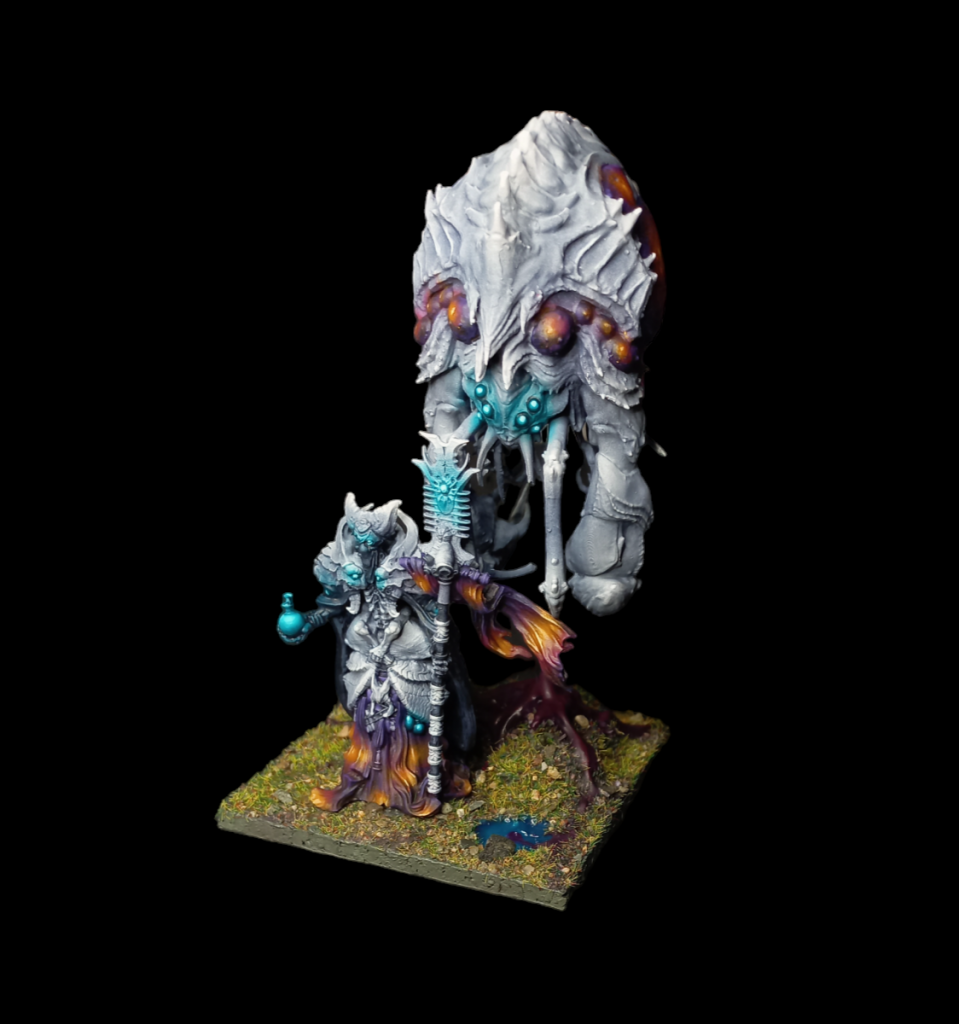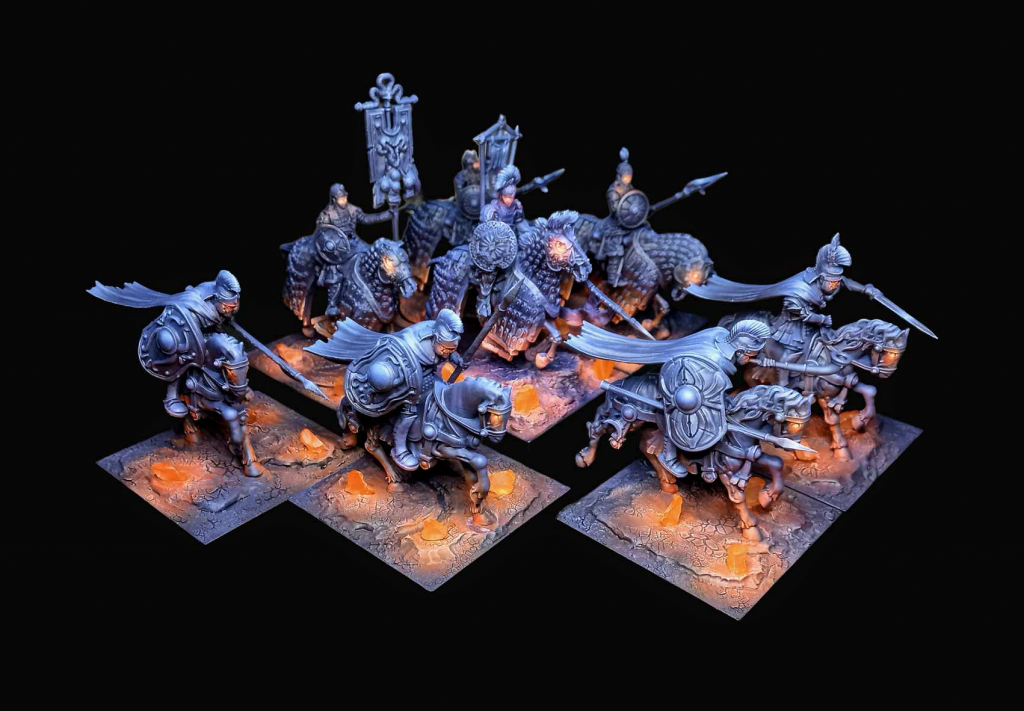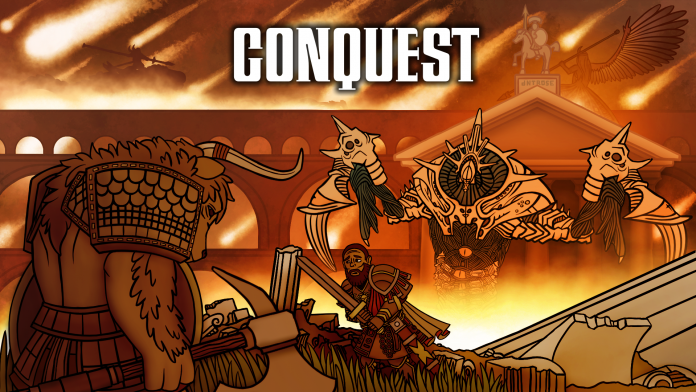I’ve read a lot of fantasy books and watched my fair share of fantasy settings on-screen, but few have captured my attention in quite the way the world of Conquest has. The lore of Eä is a complex, interwoven tapestry of history, mythology, and imagination. It’s not just another fantasy setting, it feels like an alternate universe built on countless millennia of interconnected elements. Let me break down the Conquest setting, and I’m sure you’ll grasp why I love it so much.
Grand Designs for Grimdark Fantasy
Like all good settings, Eä has a creation myth. And it’s an epic one, a cosmic drama featuring the primordial aspects of Creation and Destruction. They spar with one another to shape the universe, and the result ends up being a world rich in history and conflict.
These primordial powers are present throughout all of Eä, the world within which Conquest takes place, and present the underlying force that drives the need for conquest. Balance is possible on Eä, but is hard-fought.

Some factions, most notably the Spires, have learned to interact with and use these primordial shards in their despicable (yet delicious) activities. As a result the world feels truly alive and interconnected. The Old Dominion, for example, are ancient, but they’re more than ancient. They’re ancient with a capital A. Their un-god, Hazlia, has left an unmistakable mark on the world, influencing cultures and civilisations throughout Eä’s history.
When reading The Lord of the Rings there’s a sense of a grand battle being enacted between the underlying forces of good and evil, with the hobbits, orcs and so on simply playing out their parts. Conquest is the same, but without the hope. Both Creation and Destruction, left unbridled, are bad news, so the only way reality is capable of achieving the balance it needs is to maintain the tension – and therefore the conflict.
An Interconnected History of Power Struggles
The factions’ attitudes towards, and interactions with, these Primordials is a narrative goldmine. Many of the factions’ own creation stories heavily rely on the remnants of ancient cosmic beings scattered across the world, each one a Pandora’s box of power and peril. Imagine Indiana Jones on steroids for some of these stories and you’ll get close. The factions vying for shards of power with catastrophic consequences. And who doesn’t love Indiana Jones?

Eä’s timeline is a rich, interwoven saga of rise and fall, peace and war. Well, not so much peace. The Hundred Kingdoms, the Spires, the Dweghom, the Nords and the rest each have their own storied pasts, all interconnected in a grand narrative web. What Game of Thrones does with individual characters Conquest does on a grander scale. Every action has ripple effects across epochs.
This is particularly the case with the Spires. Despite being referred to in shorthand as Conquest’s race of elves, that’s like describing a lion as a cat to someone whose only frame of reference for felines is as a house pet. They’re not what one would describe as garden-variety elves. These bio-engineering nutty professors manipulate life itself to achieve their goals, leaning into some elf-like attributes whilst chucking a match into a box of evolution-accelerating fireworks along the way. Conquest is what happens when multiple races of creatures stack grudges upon one another and then try to take revenge.
The world-building that fills out the lore of Eä is as immersive as a wargame can ever be. From some perspectives it’s true that there is only war in the grim darkness of this world, but the complexity that has fed into some aspects it is seriously impressive. The constellations that light up the night sky of Eä, for example, are more than just pretty patterns in the sky. Many of the factions have their own interpretation for the deeply meaningful celestial narrative that’s been constructed, each of which explains the cultural nuances on display.
This level of attention to detail hints at a world that already exists. As Para Bellum Games releases each new short story or lore spotlight it doesn’t feel like a new model’s been released for mechanics purposes that they’re looking to post-rationalise. Instead, it feels like the curtain has been tugged back another couple of inches, revealing the cause of something we always somehow knew was there.
This always makes Eä an enjoyable place to visit in my mind. The connection of the remnants of ancient civilisations to the present factions – and the often open question as to where those categories begin and end – acts as a constant reminder that history is always lurking just beneath the surface. The world feels rich, deep, and internally consistent.

This all contributes to a multi-layered experience of the narrative. When Sir Matthew, the Priory Commander in a local gaming club, meets a hideous Fallen Divinity on the battlefield it’s in part because she’s responsible for the death of his brother in last week’s match. But it’s deeper than that, because his Hundred Kingdoms is the pure descendants of the Old Dominion, and his calling in life is to rid the world of this abomination. And it’s representative of the old gods, vying for power through their unwitting followers. And it’s maintaining that primordial Balance as well. We’re invited to embark on our own quests for knowledge in Eä. We’ve been given a treasure map, and while at times it’s blurry that makes it feel all the more real. What might I unearth on this adventure?
Whatever we uncover it’s likely to simultaneously feel familiar and foreign. The Dweghom are Dwarves, but they’re six feet tall. The City States are the Ancient Greeks, but with access to steampunk technology. The Old Dominion are undead but they’re not just that, they’re un-everything.
The more I look into Eä the more the world fills out in content and realism. There are giants but they’re not chanting rhymes about grinding bones to make bread. They’re elemental forces of nature, each one a terrifying reminder of the world’s primal power. Their existence makes Eä feel larger and reminds us that Eä is truly ancient and desperately untamed. The civilisations trying to carve order out of the chaos will never achieve their goal and will never stop trying.
Why I Love the World of Conquest
So, why do I love the world of Conquest? The answer to that question is too visceral to put into words. It has an ability to inspire by transporting me to a world unlike others. The rich lore, the intricate world-building, and the compelling narratives all spark a deep sense of the opportunity to visit this place, each time discovering something new.
The characters, the history, and the mythology are all quite profound and difficult to take in. Eä doesn’t feel like just another game setting, it’s a living, breathing universe that invites you to become a part of its story.
Eä is a triumph of fantasy world-building and a case study that others should look to. Its rich lore, unique feel, and intricate narratives set it apart. It feels like it has something for everyone, whether you like the tropes or want something new, are in it to get to know key characters or want a way to explore the meaning of life. I’m going to keep on returning to the world of Conquest and expect you’ll find yourself doing the same thing.
If you haven’t yet explored the world of Eä, do yourself a favour and lock yourself in a room for an afternoon to give yourself a chance to dive in. You might just find yourself utterly and irreversibly enchanted.
Have any questions or feedback? Drop us a note in the comments below or email us at contact@goonhammer.com. Want articles like this linked in your inbox every Monday morning? Sign up for our newsletter. And don’t forget that you can support us on Patreon for backer rewards like early video content, Administratum access, an ad-free experience on our website and more.


